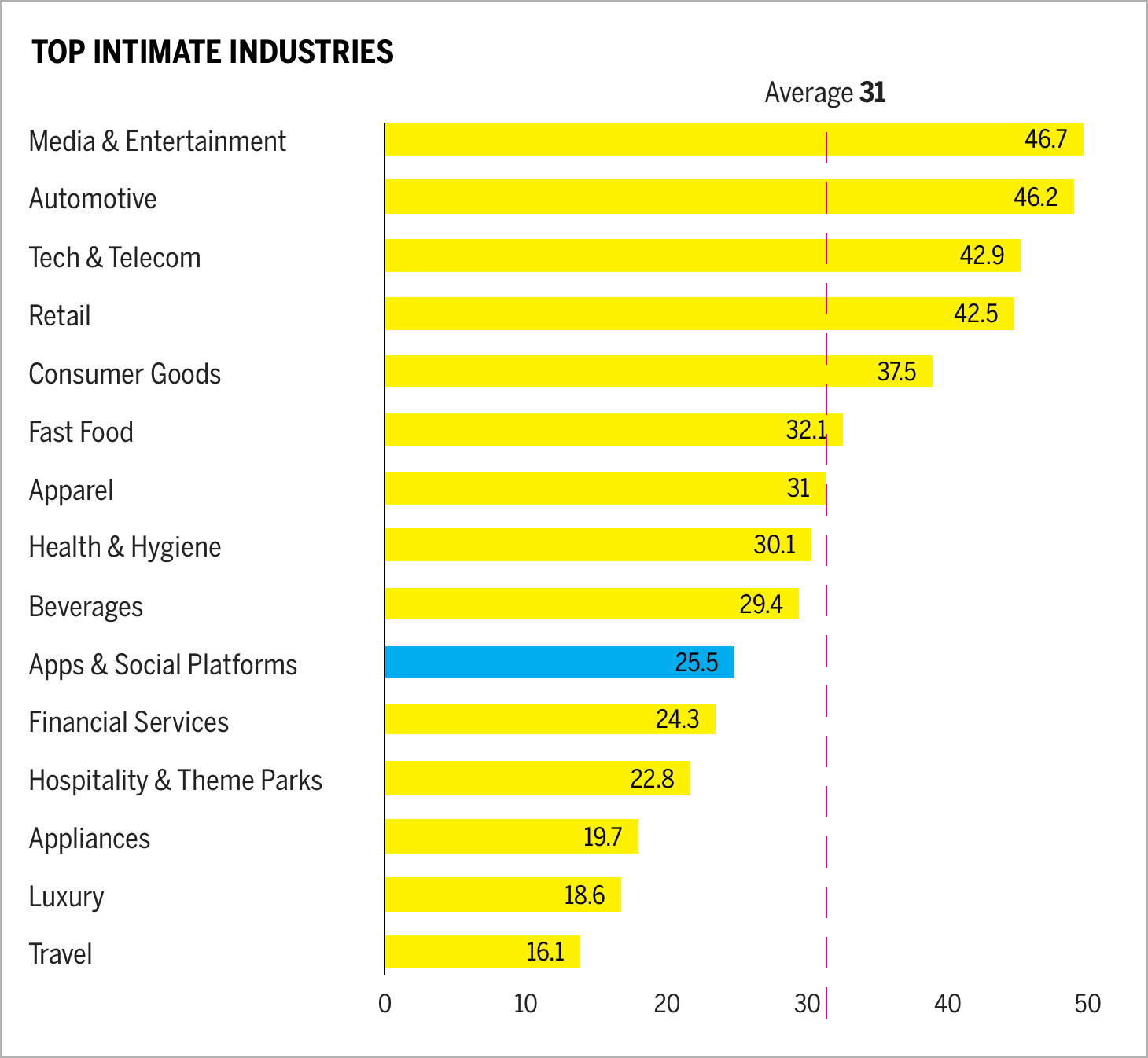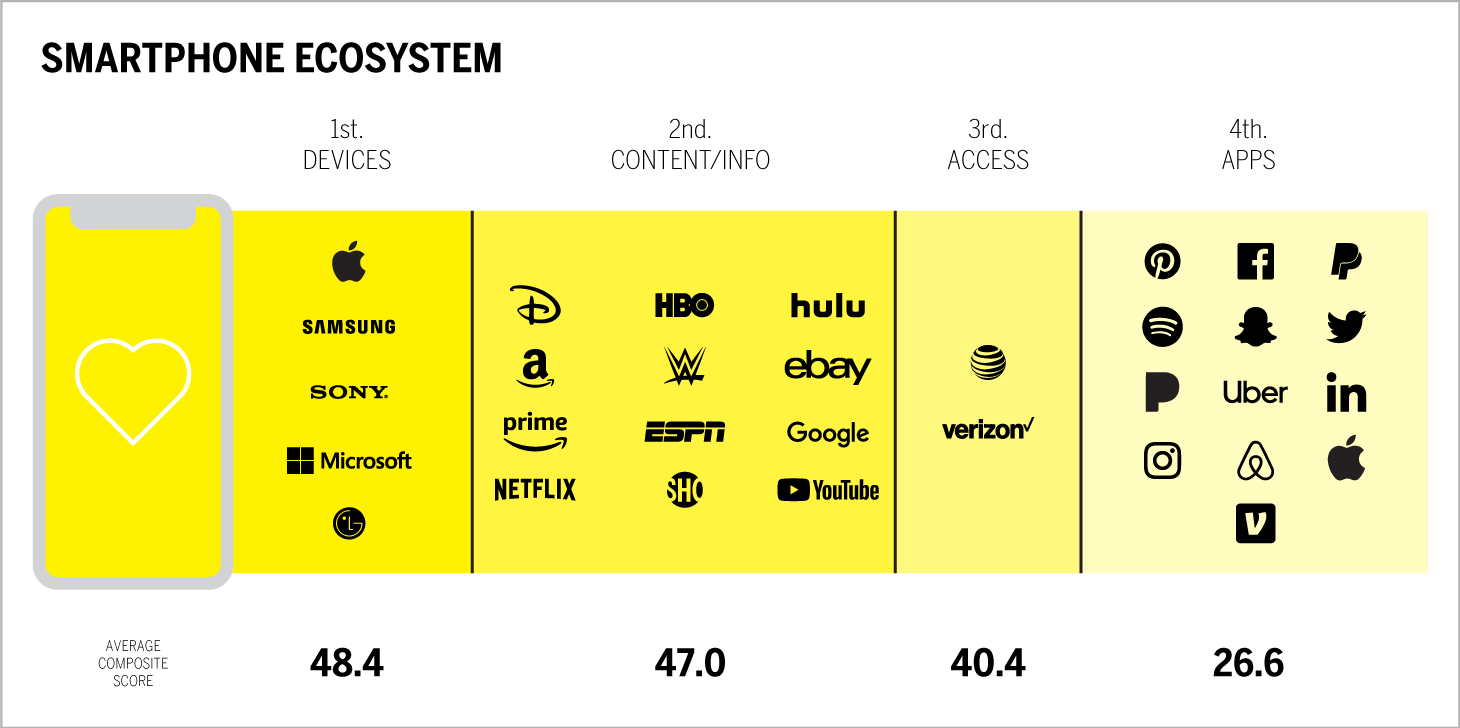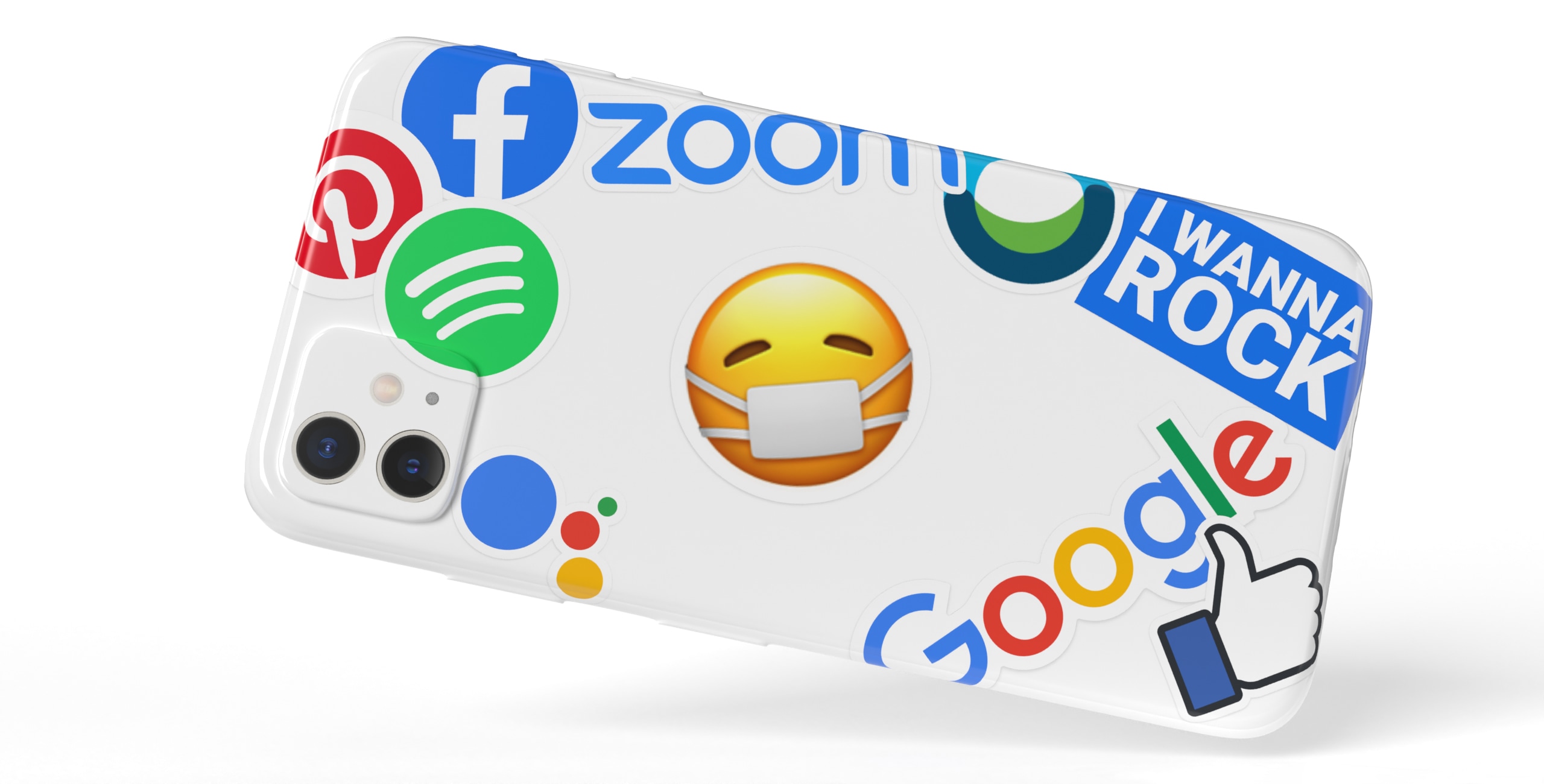Overview
- The apps & social platforms industry ranks 10th out of 15 industries for building brand intimacy.
- Enhancement, which is related to becoming better, smarter, and more connected through use of the brand, is the top archetype in the industry.
- Traditionally, apps have consistently been the weakest performing brands compared to hardware, media/content, and access, all of which play roles in the smartphone ecosystem.
As the world struggles in the face of the COVID-19 pandemic, and businesses and their brands face unprecedented challenges, we at MBLM are sharing our insights on how brands can refocus, enhance, or optimize for the marketplace we are eager to see return.
For context, our annual study of brand intimacy, the largest of its kind, launched on Valentine’s Day 2020 using research fielded in November. Because we are all facing a new COVID-19-affected reality, we decided to marry highlights of brand intimacy both before and after the pandemic emerged.
As consumers, we have now become separated from our work, the places and rituals that have defined us, and one another. Yet, we are individually and collectively bonding with brands and with each other in new and possibly more ways than ever. From hoarding and binging to observing ways that brands have either gone above and beyond the call of duty or massively disappointed us, we are witnessing dynamic brand building and erosion on a global scale.
For this reason, we thought it appropriate to reset our planned calendar of brand intimacy industry articles and begin with the topic of social media brands in this newly defined pandemic world.
Why Then?
Paradoxically, apps & social platforms brands (meant to bring people together) have historically done a poor job at building brand intimacy—the industry ranks 10th out of 15 industries. To underscore their overall ineffectiveness, the worst performing media & entertainment brands generally outperform the highest-ranking apps & social platforms brands. For brands that exist to foster connections and engagement, few seem to have created brands that build strong customer bonds.

As we have detailed in previous articles here is a summary of reasons social media brands perform so poorly:
- The smartphone ecosystem is one of the major causes of weak brand intimacy performance for apps. The chart below demonstrates a trend showing that hardware brands tend to get more credit for the role and performance that the device plays in our lives, rather than the apps on the device. Apps have consistently been the weakest performing element compared to hardware, media or content, and access brands.

- Social media brands are generally free to use, and this lack of economic equity compounds their perception as utilities.
- The two main dimensions of the brand intimacy model, archetypes and stages, reveal real performance gaps for social media brands.
- The enhancement archetype is the only one that rises significantly above the overall average, indicating a one-dimensional characteristic to the bonds formed.
- Consistent with young brands, few users are forming strong bonds, with only 7 percent in any stage of intimacy.
The weak overall performance of social media brands is confounding, given the industry does better than average in “frequency of use,” and users rate many of the brands as “essential.”
Prior to COVID-19, brands that centered on content were far outperforming brands focused on connectivity or networking.
The Emotional Pivot
On the eve of our 2020 Brand Intimacy Study launch in February, the Super Bowl provided an interesting opportunity to see how top brands communicate to their audiences.
Facebook clearly identified the need to better connect emotionally with their users and to pivot away from topics of data breaches and election swaying as they focused more on the rituals that unite us. Their ad and the campaign that followed is a message of collectivism centered on finding our tribes.
Not to be outdone, Google created a deeply emotional ad about relationships, memories, legacy, and loss.
These two ads are vivid examples of brands seeking to leverage emotion to build stronger bonds with their audience and add striking evidence that brands in this industry are seeing their weaknesses and are trying to address them.
What Now?—Post-Pandemic
Then the world as we recognize it stopped, and EVERYTHING seemingly changed. From a brand-building perspective, we are united in wondering what is next? One fundamental branding truth in challenging times is to lead with trust and more humanity—perhaps even more humility (or empathy). A month into social distancing, we’ve witnessed a renaissance of social media brands like Facebook. Since February 29, 2020, Facebook has seen a +27 percent increase in use1. Another source shows the frequency with which people game and use social apps is up by 20 percent2.
Though we know frequency of use doesn’t correlate with building more intimacy with a brand, this situation creates a unique opportunity for social media brands to build stronger bonds with users.
The pandemic has created a new brand pecking order of relevance and meaning. Content, gaming and streaming brands are generally booming, while ESPN and other sports brands and apps have experienced a -40 percent decline in use3. Video conferencing, collaboration, and learning tools are all flourishing. Cisco Webex, a video conferencing app, registered a record 324 million attendees in March, including double their numbers in the Americas, a 4x growth in Europe, and a 3.5x increase in Asia–Pacific sourced from enterprise expansion, education, and telehealth4. Zoom’s stock price has spiked more than 100 percent since January, as millions of people now work from home, although with recent concerns about trust, this number has declined somewhat5.
Another interesting trend is that we have collectively become more casual online. Production values and professionalism have slackened to accommodate home-based work. DIY TV shows are leveling the broadcast world to that of YouTubers. It will be interesting to watch brands on the winning and losing side of this spectrum adjust to win back or keep the hearts and minds of users.
A key area of emphasis is the importance of trust for social brands. Users are experiencing vulnerability, so security is key as we remain more screen-dependent and physically remote.
Better Together—A Moment to Shine
Building and maintaining strong emotional connections with users is a core tenet of brand intimacy and is also a key principle for navigating our challenging times.
The pandemic and the economic aftershocks will require brands to navigate in new and more carefully considered ways. For social media brands, we see a unique opportunity to leverage the collective spirit of fostering connections and the desire for positive change. Social media brands need to ensure they maintain the trust of users and find ways to celebrate the humanity that drives their communities. Elevating the triumphs and good of humanity may allow us to see past the divisive and negative sentiment that can pervade these platforms.
More than likes, clicks, and web traffic, brands that enable these communities to come together can build equity on fostering the safe and meaningful connections that can blossom into a newer, better social internet.
Read our detailed methodology here, and review the sources cited in this article here.
Check out our annual study and rankings of intimate brands. Visit our most recent rankings of intimate famous figures, BFF. Our Amazon best-selling book is available at all your favorite booksellers. Additionally, MBLM offers Custom Dashboards providing extensive data for brands included in its annual Brand Intimacy Study. To learn more about our Agency, Lab, and Platform, visit mblm.com.
